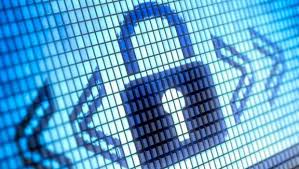Imagine needing to notarize an important document, but the nearest notary is miles away. The alternative? Sending a photo of your ID via email or uploading a selfie to a platform. While convenient, these methods are rife with vulnerabilities—photos can be stolen, identities forged, and trust compromised. Enter liveness detection, a technology that ensures the person verifying their identity is physically present and not a spoof created with static images or videos.
Here’s a look at how liveness detection transforms workflows like notarizing identity documents and why businesses should move beyond outdated methods like selfie uploads or emailed IDs.
The Traditional Workflow: Notary Visits and Emailed IDs
In a manual identity verification process, a customer gathers their identity documents and heads to a notary. The notary inspects the ID, validates it against the customer’s appearance, and notarizes the document.
Alternatively, some platforms ask customers to email a photo of their ID and a selfie for verification. While these steps eliminate travel, they introduce new risks:
- Photo Spoofing: Fraudsters can easily find or fabricate a customer’s image from online searches.
- Static Verification Flaws: Static selfies and emailed images lack the depth to confirm whether the person is present.
- Trust Erosion: Customers are increasingly wary of sharing sensitive documents via unsecured emails.
These workflows can be time-consuming, risky, and frustrating for customers and businesses alike.
The Liveness Detection Revolution
Liveness detection changes the game by verifying that an individual is physically present during the identity verification process. Unlike static photos or emails, this technology uses advanced algorithms to detect subtle, dynamic cues—like blinking, head movement, or depth perception—to confirm the presence of a real person.
Here’s how this plays out in a modern, digital verification process:
Step 1: Customer Initiates Verification
Using a secure KYC or KYB portal, the customer is prompted to upload a government-issued ID and participate in a quick liveness detection session.
Step 2: Liveness Detection in Action
The system guides the customer through simple actions, such as turning their head or blinking, while simultaneously scanning their biometric features. These real-time movements make it nearly impossible for fraudsters to use photos, videos, or masks to spoof the system.
Step 3: Automated Cross-Checks
Advanced AI validates the ID’s authenticity, matches it to the live biometric data, and cross-references the information against global sanctions lists or other risk databases.
Step 4: Instant Results
Within seconds, the verification is complete, and the business receives a secure, detailed report confirming the customer’s identity.
Why Selfie Uploads and Emailed IDs Are Risky
While selfie uploads and emailed IDs are still common, they’re increasingly insufficient in today’s threat landscape:
- Easy to Spoof: With a simple Google search or basic editing tools, fraudsters can create convincing forgeries.
- Lack of Depth Analysis: Static photos can’t confirm whether a person is physically present.
- Data Security Concerns: Sensitive documents sent via email are prone to breaches and unauthorized access.
For businesses focused on security, compliance, and trust, relying on these outdated methods is no longer viable.
The Role of KYC and KYB Portals
With integrated KYC and KYB portals, businesses can deliver secure, seamless identity verification at scale. Here’s how these solutions enhance the liveness detection process:
- Scalability: Both individual customers and businesses can verify identities in real-time without the need for physical presence.
- Privacy-First Architecture: Biometric data is processed securely, adhering to regulations like GDPR.
- Ease of Use: Customers enjoy a frictionless experience, completing verification from their smartphone or computer in minutes.
- Compliance Made Simple: Built-in checks for AML regulations and global sanctions ensure adherence to the highest standards.
Whether verifying a customer for a financial transaction or conducting due diligence on a new business partner, these portals provide an all-in-one solution for secure identity verification.
Building Trust Through Better Verification
Liveness detection isn’t just about meeting regulatory requirements—it’s about building trust in every interaction. When customers know that their identities are verified securely, they’re more likely to engage confidently with your business.
For businesses, adopting advanced liveness detection technologies through KYC and KYB portals reduces fraud, streamlines workflows, and protects sensitive data. It’s a win-win for compliance and customer satisfaction.
The Future of Secure Verification
As fraudsters become more sophisticated, businesses must stay one step ahead. Liveness detection, paired with robust KYC and KYB solutions, offers a secure, scalable way to verify identities while delivering a seamless user experience.
Gone are the days of emailing IDs or relying on static selfies. The future of identity verification is dynamic, secure, and designed to build trust at every step. Whether notarizing an identity document or verifying a business partner, liveness detection ensures that the person on the other side of the screen is exactly who they claim to be.













